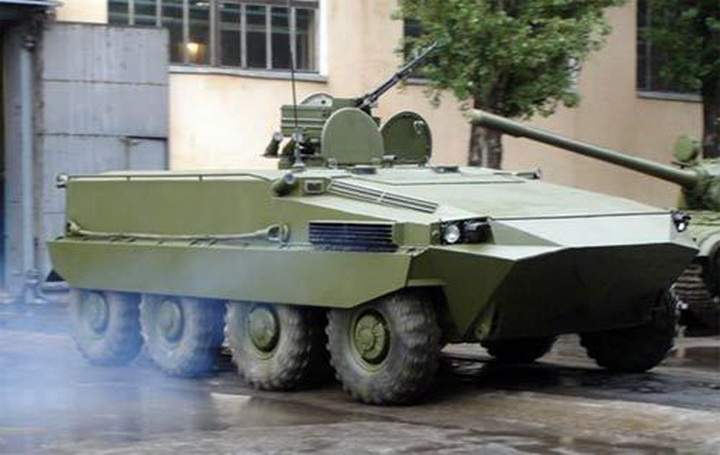ISRAEL armored vehicle Steadfast' New Armored Vehicle
for IDF.
TEL AVIV — Israel unveiled Monday its indigenous Eitan demonstrator, a wheeled, actively protected armored personnel carrier (APC) that it hopes to purchase in vast quantities over the coming decade and beyond.
At less than 35 tons, the 8x8 wheeled Eitan — Hebrew for steadfast — weighs and will cost nearly half that of new Merkava Mk4-based Namer heavy carriers now in production, according to the Ministry of Defense (MoD).
Both new vehicles are designed to carry 12 infantrymen and will replace the thousands of M113s that still support the bulk of Israeli infantry forces.
Brig. Gen. Baruch Matzliah, head of the MoD's Tank Production Office that developed both vehicles, said Eitan “will be the most advanced, protected wheeled fighting tool in the world.”
According to the officer, Eitan was designed as a low-cost, multi-mission platform, which will allow Israel to equip itself with more vehicles at a higher rate in parallel to purchases of the Namer heavy APC.
Eitan is expected to incorporate a new generation of active protection, based on the Trophy Active Protection System (APS) developed by state-owned Rafael. It also will feature an advanced, unmanned 30- or 40-millimeter turret and a full compliment of munitions and sensors.
“It will be a lot lighter [than Namer] and will be designed to cost,” Maj. Gen. Guy Zur, commander of the Israel Defense Forces (IDF) Ground Forces Command, told Defense News in an interview earlier this year. “It may be less good [as the Namer], but it will be affordable and allow us to equip a large part of our force.”
Matzliah said the project was borne from operational lessons learned from the 2014 Gaza war. Capable of unassisted road travel at more than 90 kilometers per hour, the Eitan — the first wheeled carriers in Israel’s military history — “enable fast, strategic mobility” and are “tailored to the existing threats in the arena,”
In an Aug. 1 announcement, MoD said the Tank Production Office and the Israeli military’s Ground Forces Command have just begun a series of field trials to determine performance in “varied and complex” conditions.
In the earlier interview, Zur said Eitans are part of his Ground Horizon plan, a strategic blueprint for designing Israel’s future ground force over the next two decades.
The plan also includes development of another demonstrator program called Carmel — a Hebrew acronym for Advanced Ground Combat Vehicle — aimed at driving the design of a future tank to be deployed as a compliment to the 65-ton Merkava Mk4.
The officer said Carmel is not intended to replace the Mk4, which will remain in production through 2020, but is rather a demonstrator program to evaluate a state-of-the-art, medium-weight combat vehicle. It will most likely be treaded, not wheeled.
Under the Army’s Ground Horizon plan, Eitan is expected to be ready for fielding in about five years. In contrast, Carmel is not expected to enter service until 2025 or 2027.
The Defense Ministry unveils Israel’s first wheeled armored personnel carrier, a vehicle that will replace thousands of aging M113 APCs currently in use by Israeli infantry brigades and other units.
The “Eitan” (“Steadfast”) moves away from the tread design of the older “Bardelas” (“Cheetah”) vehicle, which was found in the 2006 Second Lebanon War to be overly susceptible to enemy anti-tank rocket attacks. An explosion only needs to break a single link on the tread to unravel it and render the older APC immobile.
The new APC will also sport vastly upgraded armor and defensive systems akin to Israel’s Merkava line of tanks.

















